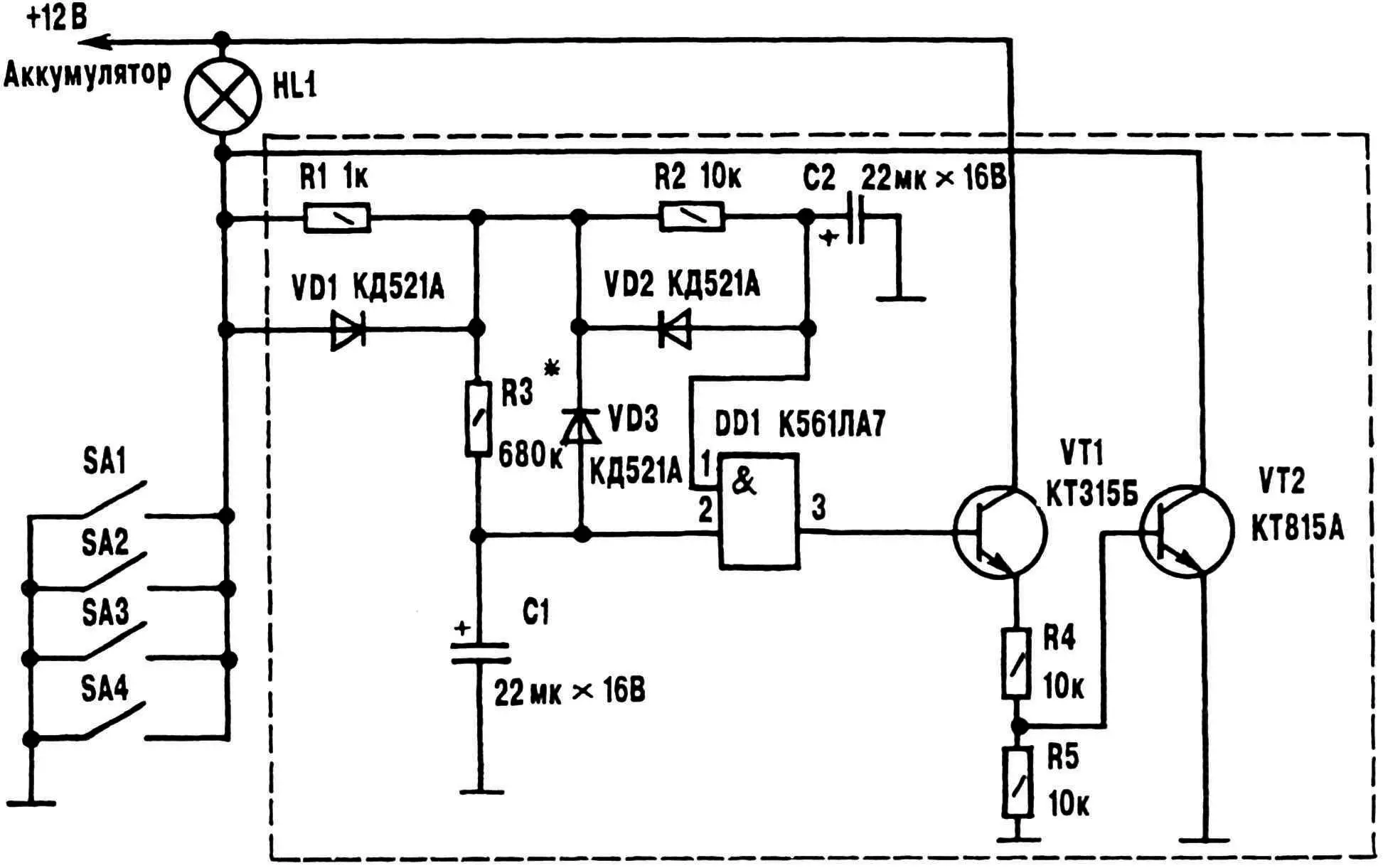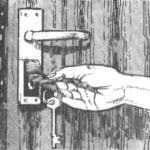One of the inconveniences in the design of many cars is that the interior light immediately turns off when the doors are closed. There are, of course, special devices that delay switching off the lighting for 5–15 seconds, allowing the driver to check the dashboard, the controls, and insert the ignition key. However, such solutions are usually complex and expensive. Moreover, their reliability often leaves much to be desired.
I recommend equipping the car with a homemade device, the schematic diagram of which is shown in the illustration — and, as they say, there will be no problems at all.
With the doors closed, the contacts of switches SA1 — SA4 are open. Therefore, the interior light HL1 does not illuminate. Capacitors C1 and C2 are charged through circuits VD1R3 and VD1R2, respectively. Pin 3 of microcircuit DD1 has a logical “0,” and the transistors (VT1, VT2) remain in the off state.
When any of the doors are opened, the corresponding contact (switches SA1 — SA4) closes. The interior light immediately turns on. At this moment, capacitor C1 starts discharging through circuit VD3R1SA, and capacitor C2 — through circuit VD2R1SA.

When the car doors are closed again, contacts SA1 — SA4 open. As a result, capacitors C1 and C2 begin charging through the previously described circuits. But since the charging time of C2 is much shorter than that of C1, pin 1 of the microcircuit receives a logical “1,” while pin 2 receives a logical “0.” Therefore, the output at pin 3 of DD1 is “1.” Transistors VT1 and VT2 are in the open state, with the second one continuing to keep lamp HL1 illuminated.
After capacitor C1 completes charging, logical “1” will be present at both inputs of microcircuit DD1, and logical “0” at output pin 3. As a result, transistors VT1 and VT2 switch off, and lamp HL1 turns off.
The duration during which the interior lamp continues to glow after the door is closed is determined by the timing chain VD1R3C1. This duration is approximately 10.5 seconds. The required delay time can be achieved by selecting resistor R3 and capacitor C1.
With the doors closed, this homemade device consumes a current of only a few microamperes. Its assembly is simple. Moreover, due to the small number of components, the assembly can even be done using point-to-point wiring. MLT-type resistors and K30-16 capacitors are rated for 16 V. The device does not require any special adjustment or tuning.
“Modelist-Konstruktor” No. 5’98, V. PROKOPENKO, Minsk



